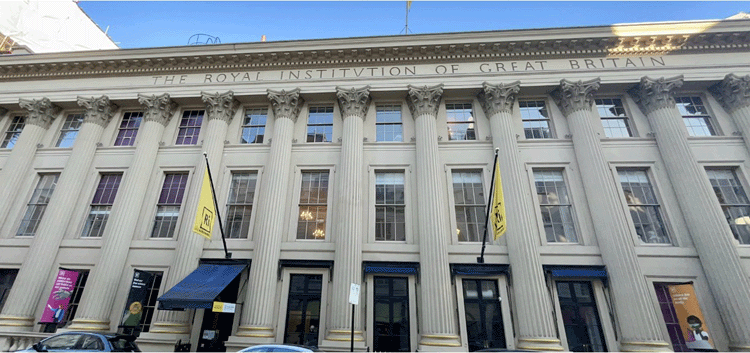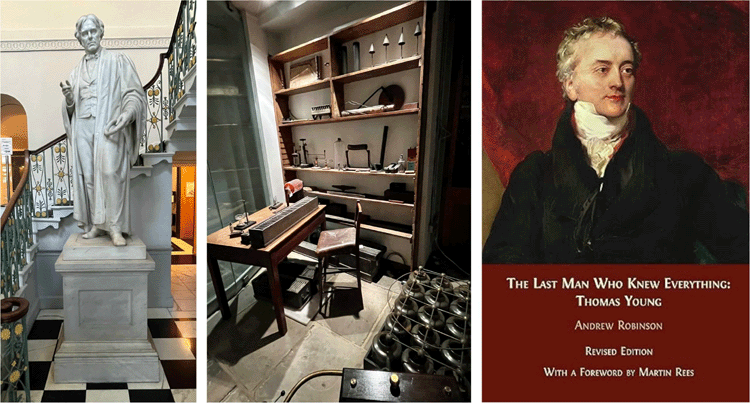Royal Institution
Last year’s visit to the U.K. focused on rock & roll – and I decided to get a bit more serious on this year’s return, on my way home from China. I arranged a personal scientific history tour with Laurence Scales, a knowledgeable guide who took me through the Royal Institution of Great Britain in Mayfair, and well as nearby historical sites in Soho.

The Royal Institution (RI) was founded in 1799, with a mission a bit more practical than the better-known Royal Society – although its personnel were equally distinguished. Early leaders included the chemist Humphrey Davy (inventor of the Davy lamp); the electrochemist Michael Faraday; and – especially relevant today – the Irish physicist John Tyndall, often called the father of climate science, because of his determination of the absorptive capacities of individual gases in the atmosphere. [Tyndall met an unfortunate end when he was accidently (?) poisoned by his wife.]
By lucky happenstance, we were able to get into the laboratory of the Faraday Museum – still locked with the original key that Faraday used. Laurence also told me about another distinguished RI scientist that I didn’t originally recognize: Thomas Young. I did vaguely recall Young’s Modulus from my days as an engineering lab assistant in a materials science course back in the early 1970s…. but his description of this polymath led me to a fascinating book by Andrew Robinson, entitled The Last Man Who Knew Everything:Thomas Young.

In addition to material science, Young had ground-breaking scientific ideas in optics, medical physiology, language theory, and – perhaps most surprisingly – Egyptian hieroglyphics. He was, however, a rather poor lecturer at the Royal Institution: since he knew everything, he apparently assumed that others did as well.